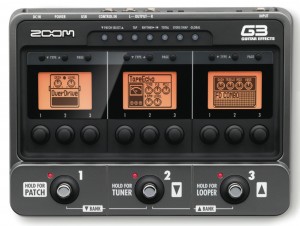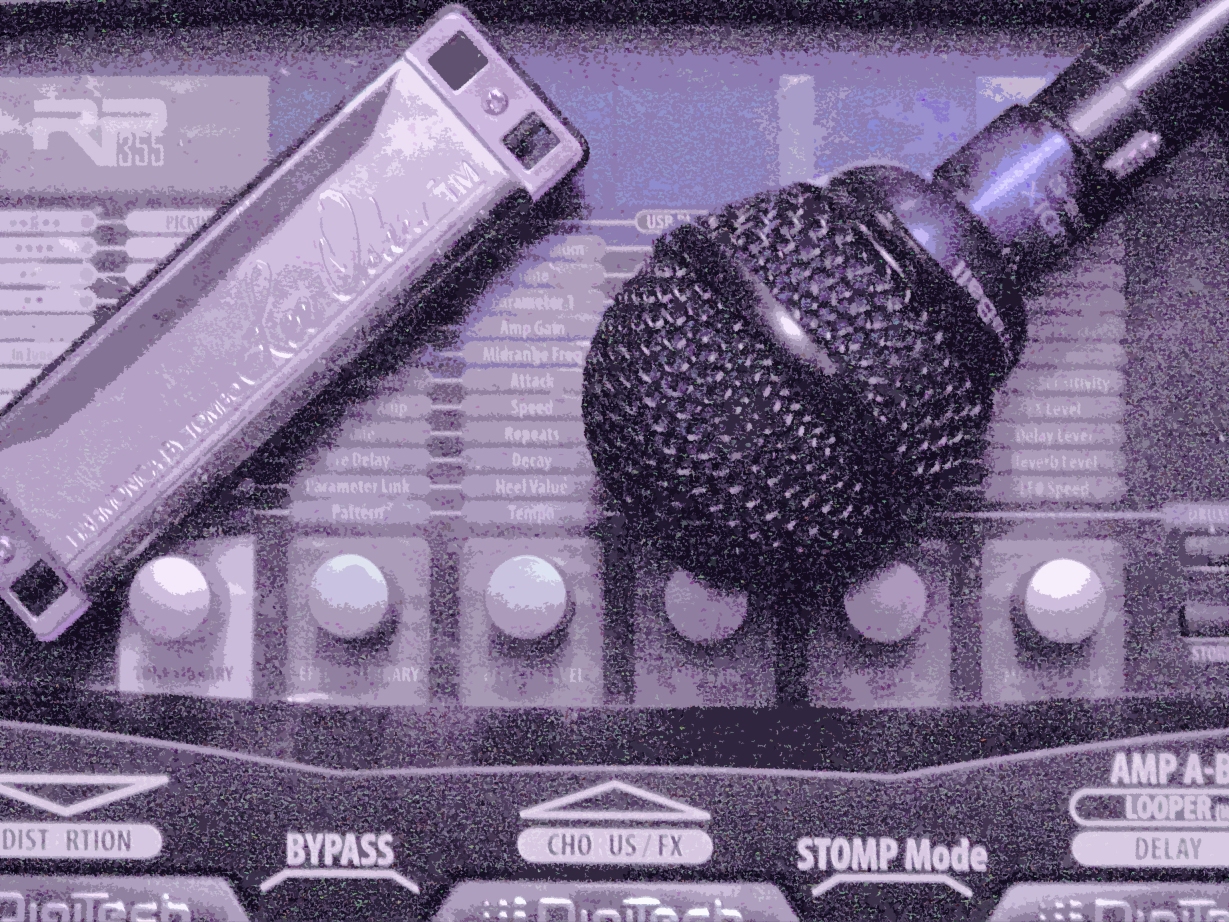
First impressions of the Zoom G3
I spent a few hours yesterday working with the Zoom G3, and it’s an interesting box. Here are a few of my initial impressions.
First, it’s not an extremely simple device to operate. There are a lot of buttons on the device, which is both good and bad–good in that there are dedicated buttons for many functions, bad in that there’s a lot of stuff to learn. It’s not always obvious how you get a particular thing done. I found that I had to consult the manual more than once, especially after I installed the v2 operating system, which I strongly recommend even though it’s a multi-step process–first you install Edit&Share so you can backup your patches, then you install the new factory patchset, then you install the new OS. But it’s well worth the effort. With the v1 operating system, you get a total of three FX per patch, and an amp model accounts for one of them. If you figure that you’re going to use one slot for a delay or reverb, you’ve got one slot left for something like a pitch shifter or vibrato. That’s not a lot of FX firepower compared to a Digitech RP, which offers wah, compression, distortion, amp modeling, EQ, noise gating, pitch/time modulation FX, delay, and reverb in every patch. The V2 update adds another three FX to the chain, bringing the total to 6, which is enough for some pretty complex timbres.

Even more crucially, you can string any of the FX in the box together in any order you like, which is something you can’t do on a Digitech RP. (The order I laid out for the RPs above is the one that’s fixed in them.) The ability to string multiple modulation FX together in any desired order makes this box capable of VERY complex timbres that can’t be created on an RP. For example, you can use a pitch shifter to add a lower octave to a note, then add another pitch shifter to lower the resulting pitch(es) by a perfect 4th. This immediately gives you four notes per pitch played (original + octave + the pitches a 4th below each of them); if you play intervals like 5ths and octaves, you get big chord textures with six or more notes, spanning more than two octaves. Those are some BIG sounds, man. And you don’t have to stop there–with this device, you can then add an auto-wah, a vibrato, a chorus, or all three, and still have room for an amp model. Did I mention that you have instant on/off control over three elements of the FX chain at a time via footswitches? You can use a single amp model setup as the base sound for up to 5 switchable FX, three visible at any time on the unit’s display. Very handy in performance, I’m sure.
The possibility of those hugely modulated textures is what excites me most about the G3; I have no doubt that I can make this thing bark like a three-headed dog from Alpha Centauri. What I’m most concerned about is whether I can use the G3 to make the moderate-gain kinds of sounds (y’know, like the ones that come out of a Fender combo amp) that most harmonica players need in their basic kit. Stay tuned for more news on this device.
A few hours later: As I suspected, it’s nice to have the freedom to move FX around in the chain. I’ve put a couple of cool sounds together in the last hour or so, including one very nice setup with a pitch shifter, vibrato, and autowah, in that order, followed by a tape delay. It’s great fun to set the chains up and then turn pieces on and off with the footswitches. (It’s especially nice when you kick the vibrato in on top of the autowah, which causes every little vib to trigger the autowah, producing a cool kind of stuttering wah.)
I’ve discovered that the G3 has a bunch of nice delays in it, but the reverbs and some of the FX are simply are not up to the standards of a Digitech RP. The Hall reverb in the G3 is amazingly “tanky”–the density is so low that you can clearly hear individual echoes within the ambience. Not tops. I guess it helps to have Lexicon building your reverbs for you, as Digitech does. To be fair, I haven’t tried the “high density” reverb effect in the G3 yet, mainly because the manual notes that it uses up a lot of CPU juice. I’ll get to it sooner or later.
The autowah works very well–I like it almost as much as the FX25 model in the RP355, and better than the envelope filter model found in the RP255 and 155. The vibrato sounds good too. The pitch shifter is not as clean and responsive as the one in the Digitech RPs, but it’s good enough, meaning that it tracks all over the harp and can handle chords.
I’ve only worked with one amp model so far–the “FD Combo,” which is modeled on a Fender Twin Reverb–and it’s decent enough. I’m going to try something crunchier–like the Fender Bassman or Vibrasonic models–later. Watch this space for news.
Related Posts
Leave a Reply
You must be logged in to post a comment.
WHAT’S NEW
Categories
- Audio/Video
- Blog
- Blue Future
- Digitech RP Tricks and Tips
- Discography, CDs, Projects, Info, Notes
- Featured Video
- For the Beginner
- Gallery
- Hunter's Effects
- Hunter's Music
- Huntersounds for Fender Mustang
- Meet the Pros
- More Video
- MPH: Maw/Preston/Hunter
- My Three Big Contributions
- Player's Resources
- Pro Tips & Techniques
- Recommended Artists & Recordings
- Recommended Gear
- Recorded Performances
- Reviews, Interviews, Testimonials
- The Lucky One
- Uncategorized
- Upcoming Performances
- Zoom G3 Tips and Tricks
